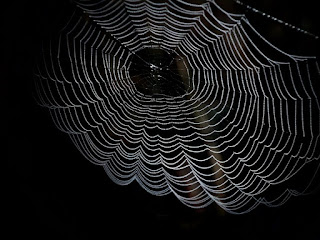What is the dark web and why does it matter to IP professionals?
What is the internet? It sounds like an easy question. After all, we all use it everyday. In fact, most of us spend an appreciable fraction of our lives using it.
But like a lot of the technology modern life depends on, the fact is that few of us can explain how it works. We’ve already discussed some of the many advantages the internet is bringing for trademark professionals, but it also brings new risks, and the dark web is chief among them.
And to understand what the dark web is, we need to take a look at how visiting a website actually works.
From the Net to the Web
We use the terms internet and web interchangeably, but these two words mean two very different things.
The internet is a network of networks. Basically, you can think of the internet as the sum total of all the computers and other devices that connect to one another.
What we call the web is a way of sharing information using this network of networks. Think of it as a set of agreements about how to structure information, so that each user of the web knows how to access web documents, which we call web pages.
So, the internet is the network, and the web is the content that is available on that network. And because there’s an awful lot of content, we need some way to navigate it quickly. As long as the web content is indexed properly, a search engine like Google lets us do just that.
The web content that can be accessed this way is known as the surface web, and it accounts for the vast majority of web content. Content that hasn’t been indexed is called the deep web, and is invisible to your search engine.
So, what does the “dark” mean?
The difference between the deep web and the dark web is really about intention. There are actually plenty of innocent reasons why web content might not be indexed, so the Deep Web is not necessarily anything nefarious.
By contrast, the Dark Web refers to content that has been intentionally hidden. To access it, you need to use special software and go through a Dark Net. You may have heard of TOR network – this is an example of a Dark Net.
Essentially, by Dark Nets allow people to share content in a way the preserves their anonymity and keeps it invisible from users of the normal, or Surface Web.
There are different reasons people might want this kind of protection. However, as you’ve probably guessed, the biggest is because they want to engage in illegal activities.
What does this have to do with IP?
When IP lawyers or owner monitor for IP infringement online, they normally do so by accessing the Surface Web. The problem is that, according to various estimates, the Surface Web accounts for around 4-5% of total web content.
What really matters is not the majority of Deep Web content, but the purposefully hidden material on the Dark Web. Traders can buy and sell fake goods there with much less risk of being exposed.
For example, you may have heard of the infamous Silk Road, an online marketplace where everything from illegal drugs to weapons were bought and sold before it was shut down by the authorities. Next to such serious breaches of the law, there is also an ongoing opportunity for people to sell and buy counterfeit goods.
There is no simple solution to this problem. However, it’s important to understand that protecting IP is getting more and more complicated in the digital age. Before you rest easy that your brands are adequately protected online, remember that there’s much more to the internet than first meets the eye.

